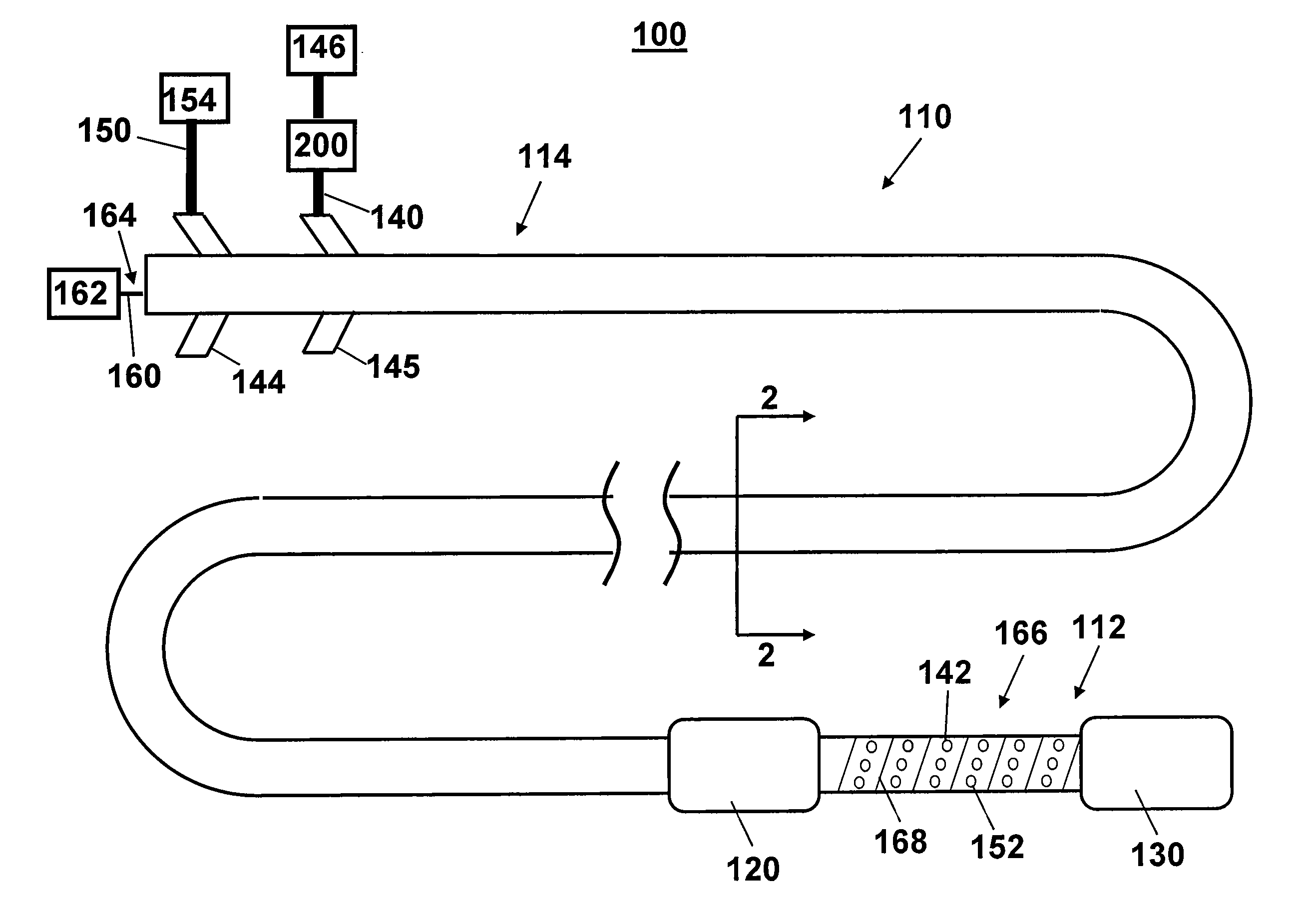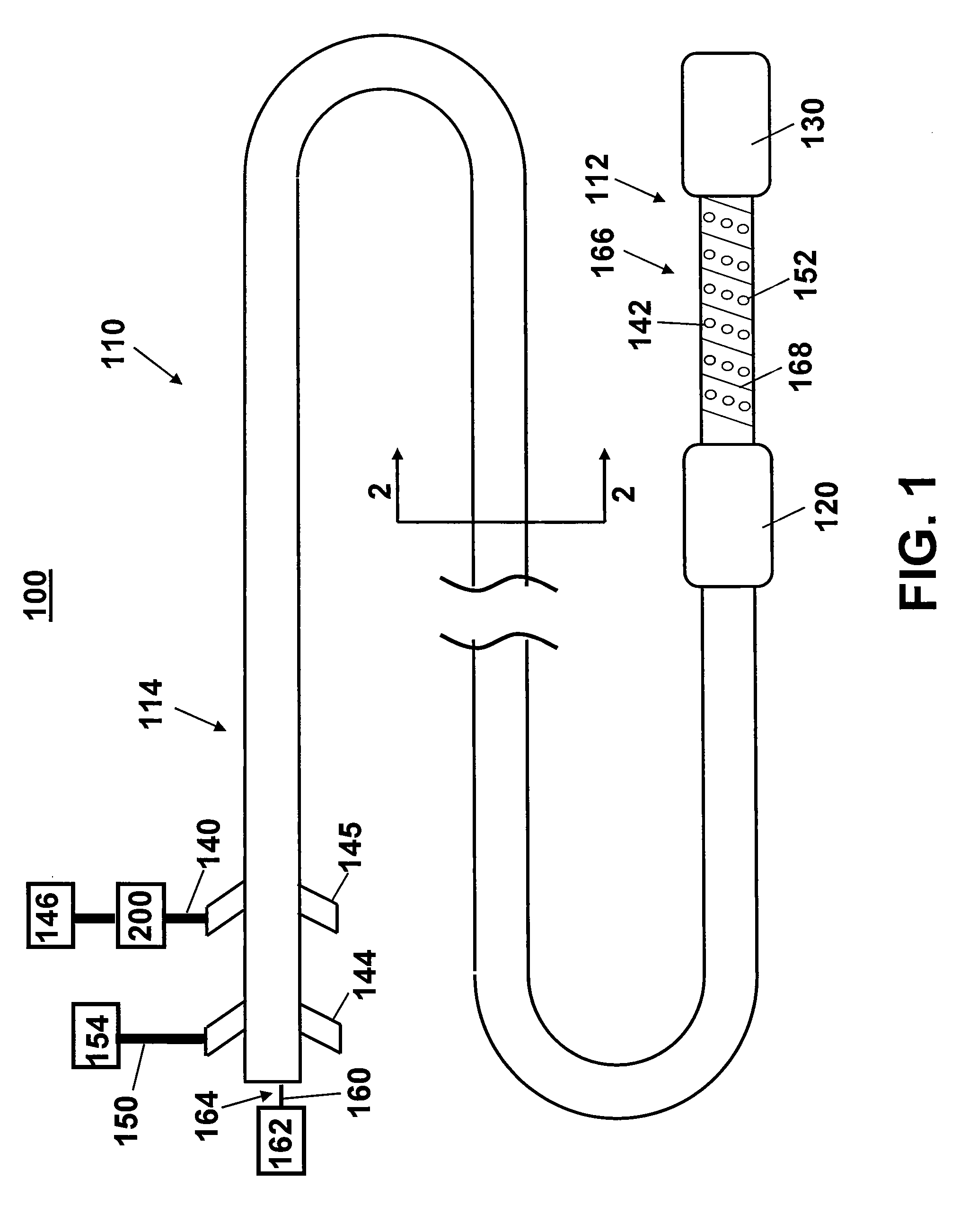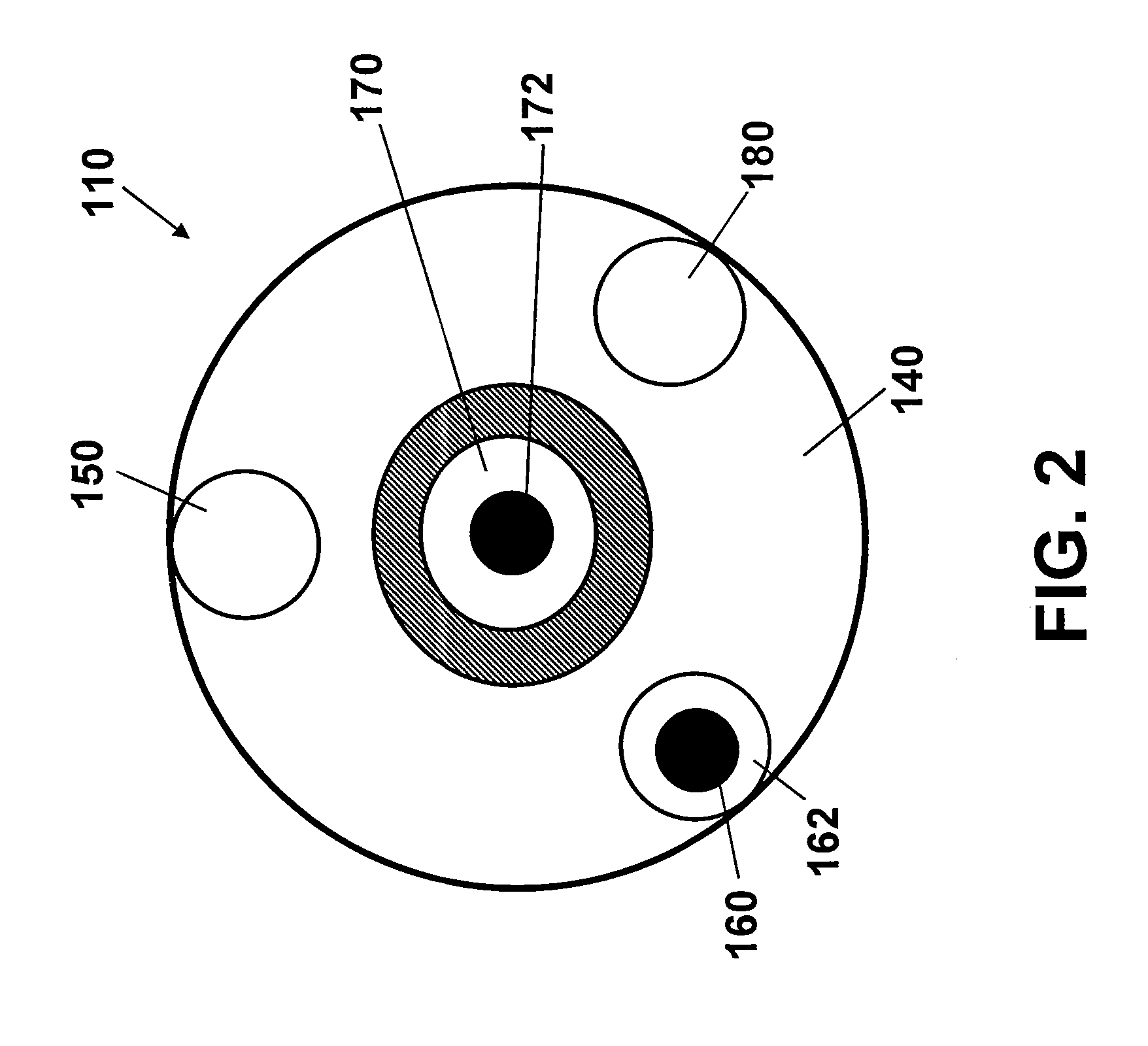Closed Loop Catheter Photopolymerization System and Method of Treating a Vascular Condition
a closed loop catheter and photopolymerization technology, which is applied in the field of biomedical systems for treating vascular conditions, can solve the problems of unfavorable patient safety, unsatisfactory treatment effect, and large crossing profile of catheters,
- Summary
- Abstract
- Description
- Claims
- Application Information
AI Technical Summary
Benefits of technology
Problems solved by technology
Method used
Image
Examples
Embodiment Construction
[0015] One aspect of the present invention is a photopolymerization system for treating a vascular condition. The system, illustrated in FIGS. 1 and 2 at 100, includes a catheter 110 having a proximal inflatable member 120, a distal inflatable member 130, a fluid delivery lumen 140, and a fluid drainage lumen 150. Fluid delivery lumen 140 includes at least one delivery port 142 and the fluid drainage lumen 150 includes at least one drainage port 152. Ports 142, 152 are positioned between the proximal inflatable member 120 and the distal inflatable member 130. A light emission member 160 is positioned adjacent the catheter 110.
[0016] In one embodiment, light emission member 160 is an optical fiber operably connected to a light source 162 at a proximal portion 164 and abraded at a distal portion 166. Proximal portion 164 is substantially straight along the length of catheter 110 terminating adjacent a connecter arm of a luer 144. Light is transmitted from the light source 162 through...
PUM
 Login to View More
Login to View More Abstract
Description
Claims
Application Information
 Login to View More
Login to View More - R&D
- Intellectual Property
- Life Sciences
- Materials
- Tech Scout
- Unparalleled Data Quality
- Higher Quality Content
- 60% Fewer Hallucinations
Browse by: Latest US Patents, China's latest patents, Technical Efficacy Thesaurus, Application Domain, Technology Topic, Popular Technical Reports.
© 2025 PatSnap. All rights reserved.Legal|Privacy policy|Modern Slavery Act Transparency Statement|Sitemap|About US| Contact US: help@patsnap.com



